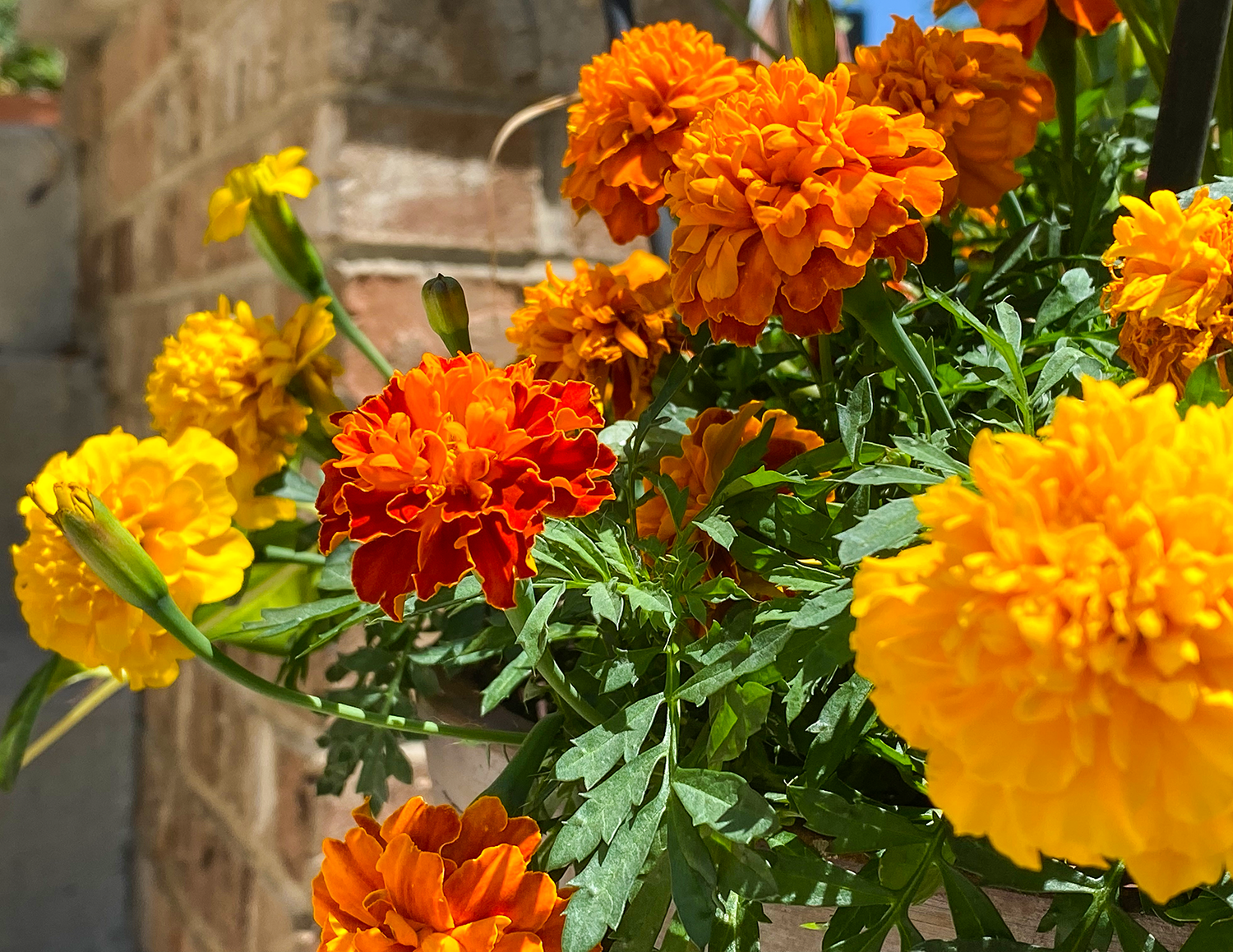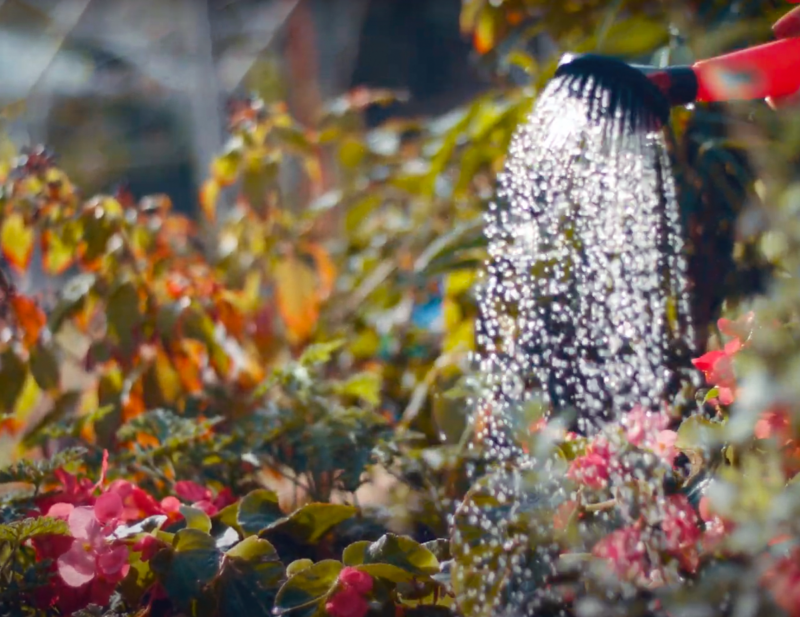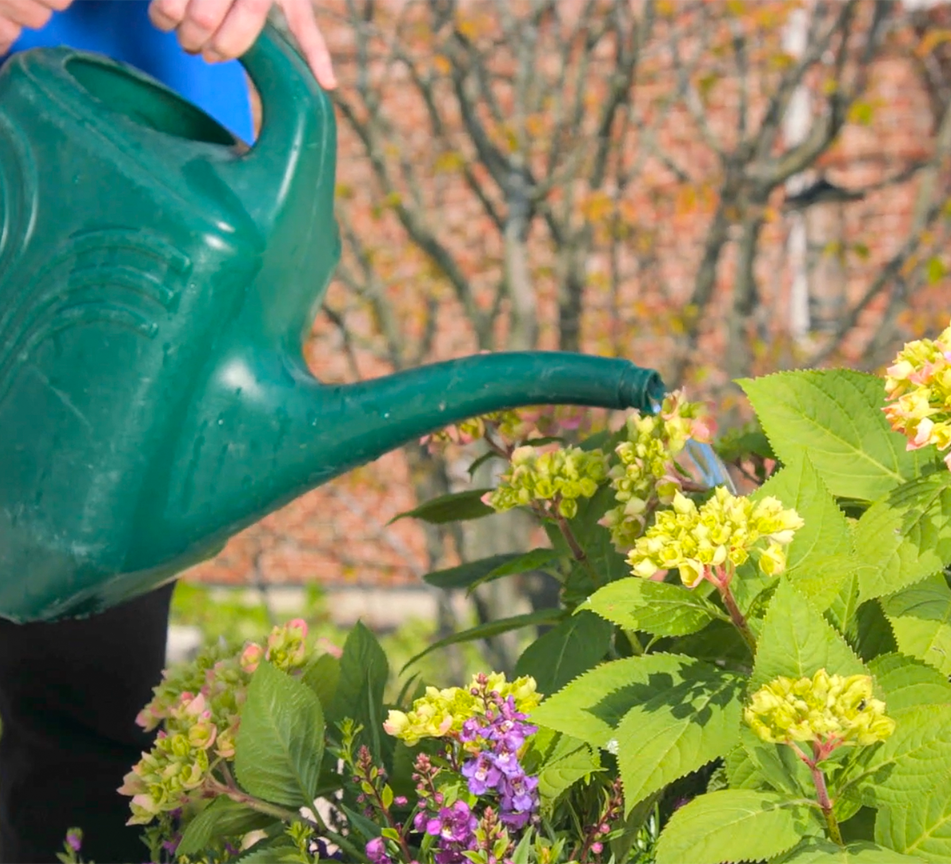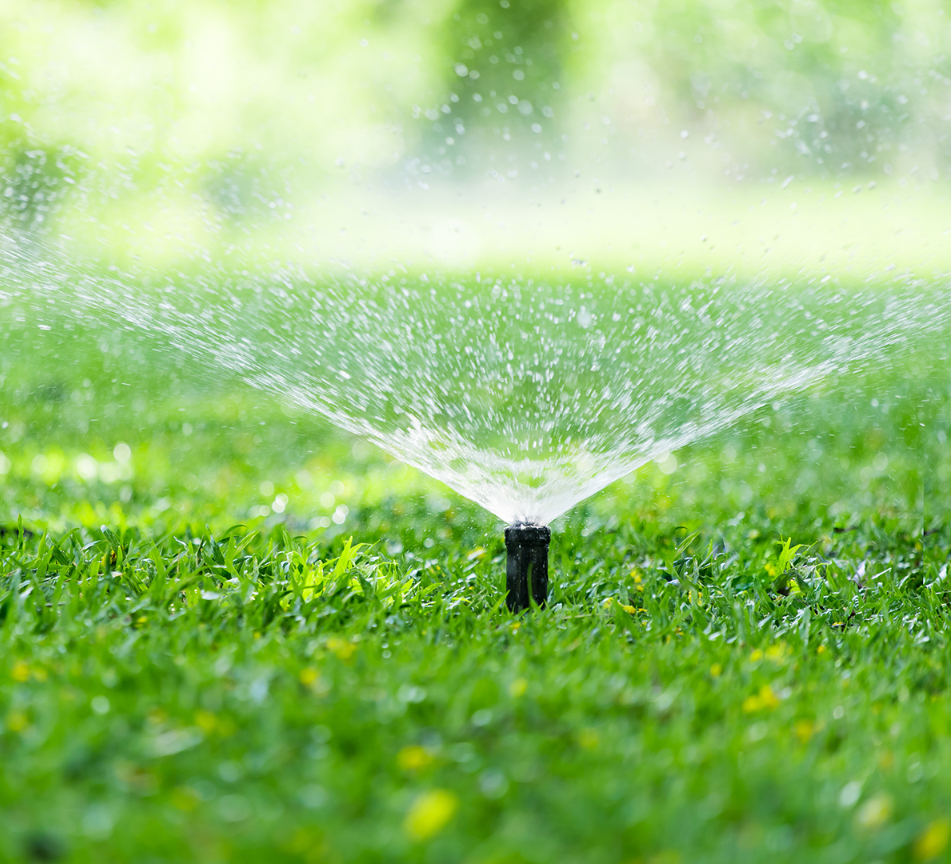

Happy summer plant lovers! Did you know that Marigolds thrive in warm weather and bright sun? It’s the perfect time for this annual favorite…and to learn how you can keep them (and other plants) healthy with proper hydration.
Let’s dig into these golden tips and hydrating tricks from our very own Hinsdale Nurseries staff.

Marigolds are Magical
Marigolds are a multifunctioning, beautiful addition to any landscape. Whether you’re someone who enjoys flowers, loves veggies, or both, consider Marigolds! Their vibrant orange, red, and yellow colors will illuminate any garden, and they’re edible, too!
Get to Know Marigolds.
Marigolds are a favorite among many gardeners. These popular flowers can be grown easily from seed or by transplant. Marigolds make a great addition to containers, gardens, landscapes, and as a cut flower in your summer centerpiece. These plants offer a variety of vibrant colors and a clean, crisp scent. Marigolds don’t require much attention, and they grow quickly.
Full-sun locations allow Marigolds to thrive, however, they can tolerate a partially-shaded area as well. They aren’t picky about soil either. This allows you to concentrate on the soil needed for your other higher-maintenance plants and veggies. Pop some Marigolds right into that area without worry.
A definite perk of the Marigold is that they can be grown as an annual almost anywhere in the contiguous US! Marigolds can be grown as a perennial if you live in USDA hardiness zones 9,10, or 11. If you live in hardiness zones 8 and below, you can grow Marigolds in containers and bring them inside during the cold months.
These great-looking flowers not only add beauty to your landscape and containers, they benefit the plants around them. With simple growing ability and easy care, why not give them a try?

Bees, Birds, and Butterflies, Oh My!
Marigolds are a summer staple and carry their charm into early fall. This is great for pollinators. Bees and butterflies love these vibrant plants. Attracting pollinators is essential for our ecosystems as they help plants reproduce. By planting Marigolds, you can attract pollinators, and this will help your garden and vegetables flourish. Pollinators are also amazing creatures that add charm to any gardenscape.
A Natural Pest Protector.
Marigolds attract the right kind of insects—the kind that help protect your flowers and veggies against harmful pests. Aphids and spider mites often suck away nutrients. An increased amount of ladybugs, hoverflies, or other predatory insects will decrease damage to your garden by feasting on harmful pests while leaving your plants alone. Marigolds also have a limonene secretion that pests do not like. This helps keep these pesky creatures away from neighboring plants.
 Tint with Nature.
Tint with Nature.
Whether you’re into cooking or fashion, Marigolds could be your secret weapon. Dried flowers crushed into a powder can be added to your baked goods for color. If you’re worried about altering the flavor, don’t be! When baked, the flavor is generally cooked out. Looking to add yellow to a fabric? Marigolds can also be a natural dye. Simply soak the flowers in warm water overnight, strain out the flowers, and add the water left behind to dye cotton, wool, or silk.
Say No to Nematodes.
Nematodes are another microscopic pest that lives in soil. They are harmful to plants and people. Do not worry, Marigolds can save the day yet again with a chemical they produce that kills them. For optimal protection, plant marigolds throughout your vegetable garden.
 Feed the Chicks.
Feed the Chicks.
If you’ve got your own coop, Marigolds can be an awesome snack for your feathered friends. Not only do they love the taste, but dried petals have been known to intensify egg yolk color.
Take One for the Team.
Plant Marigolds on the boundaries of your flower or veggie garden and they’ll be your first line of defense against pests. Though it means your happy Marigolds will take a hit, they’re a great option because of their quick and easy growth. Your other plants will be thankful!
 An Edible Vision.
An Edible Vision.
In addition to pest protection and eye-catching blooms, Marigolds offer another unique characteristic, they’re edible! Try the flower of a Marigold and avoid the bitter greens. They’ve often been described as having a spicy or citrus taste. Add Marigolds to salads, soups, and stir-fries. It’s also said that diffusing Marigolds in your tea adds flavor, color, and helps with soothing a sore throat or alleviating cramps.
Let’s Get Started.
You can pick up Marigolds here at Hinsdale Nurseries. Once you’re home, it’s time to find a place to plant. As we know, these flowers are low maintenance and easy to grow. Just keep a few things in mind as you start your Marigold journey…
- Marigolds bloom best when planted in direct sunlight. They will tolerate partial shade, however, likely, you won’t see their full blooming potential.
- If you have the choice, well-drained soil is a great option. But, they’re not too picky when it comes to soil. They’re adaptable!
- Hinsdale and its surrounding areas fall into hardiness zone 5b. That means spring plantings need to happen in the spring when there’s no worry of frost.
Ready to start growing Marigolds? Stop into Hinsdale Nurseries. We have a beautiful selection of flowers and are here to help with any of your landscaping needs.

It can be difficult to understand the appropriate time and length to water all the different plant life in your landscape. Am I watering too much, too little, or just enough? Our watering guide will help you avoid root rot, learn the ropes, and provide your plants with the perfect amount of hydration so they can prosper.

Trees & Shrubs
Trees and shrubs have varied watering needs depending on many factors including the type of plant, its age, soil conditions, sun exposure, wind conditions, temperatures, and rainfall. An even and thorough soaking to a 6” to 8” depth is recommended to ensure moisture penetration to the entire root system. To achieve this, either a soaker hose around the base of the plant or a garden hose running at a slow trickle can be used. A general timeline is 20 to 30 minutes of soaking for shrubs or one hour for a tree. To check soil moisture, a stick can be pushed 6” to 8” into the ground near the base of the plant. If the stick comes out clean, the soil is too dry, and more water is needed. Soaking should be done about once a week depending on weather conditions. Remember that overwatering can be just as harmful as underwatering.
Groundcovers & Perennials
Groundcovers and perennials should be checked for watering every other day for the first month after planting. If the plant needs water, a thorough soaking is recommended. Once established, 1 inch of water per week is sufficient.
 Shrub Roses
Shrub Roses
Water shrub roses such as Knock Out varieties regularly (as often as twice a week) until established and then during any extended dry periods. Apply water to the root zone only and not over the top of the plant, leading to leaf spot and disease.
Lawns
Newly seeded lawns should be kept moist, but not wet, by watering just until slight puddling occurs. Once the new grass becomes more established, watering frequency can be systematically reduced over several weeks. This allows the roots to strengthen and adapt to more normal conditions. Be cautious not to overwater your lawn (large puddles) or underwater (dried out brown turf or cracks in soil).
Newly-laid sod should be watered immediately and then soaked daily for the first few weeks after installation. Watering with a lawn sprinkler for 20 to 30 minutes per area will ensure that the water soaks through the sod to the undersoil where it is needed for proper root development. Pay close attention to the corners as they are easily missed.
 Watering in Late Fall
Watering in Late Fall
Even though the temperatures get cooler and leaves will drop in fall, the roots of plants are still active underground. Watering until the ground begins to freeze will help keep plants healthy. Evergreens should be watered regularly until the ground is frozen and will no longer accept water. Winter winds can pull moisture from these plants’ needles or leaves, causing them to have brown patches as the weather warms in spring. If evergreens head into winter well hydrated, this winter burn can be minimized.
Also, remember to water your spring-blooming bulbs as they develop their root system in the fall. If the soil is too dry, the roots will struggle and you may not have tulips or daffodils in spring.
Connect with Us!
630-323-1411
7200 S. Madison St.
Willowbrook, IL
Blog: https://hinsdalenurseries.com/blog
Facebook: https://www.facebook.com/HinsdaleNursery
Pinterest: https://www.pinterest.com/hinsdalenursery/
Twitter: www.twitter.com/HinsdaleNursery
Instagram: www.instagram.com/Hinsdale_Nurseries/
YouTube: https://www.youtube.com/channel/UC5GUOu9abCvL9ZDNJBSunrA
Website: https://hinsdalenurseries.com/


